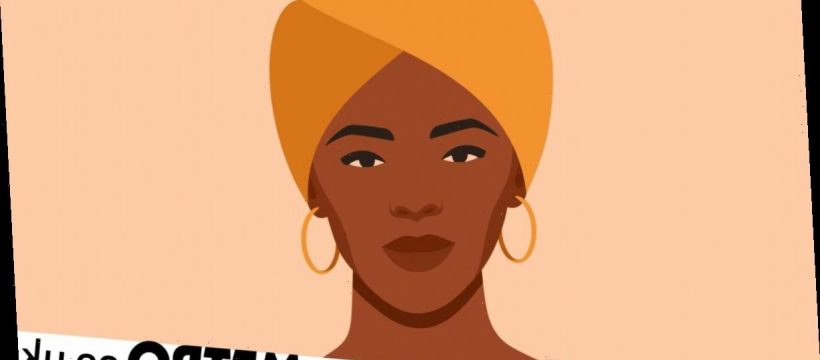Earlier this year, the murder of George Floyd brought systemic racism to the fore. Companies and individuals were compelled to examine their behaviour – and one of the industries in the firing line was beauty.
Perhaps it was inevitable that a sector focused on looks, with a huge presence on social media, would be in the spotlight.
But this introspection uncovered issues far more fundamental than the range of foundation shades, and the models used in advertising campaigns, which grabbed headlines early on.
It became apparent that hair stylists aren’t routinely trained in how to cut and style Afro hair; that published literature around fillers and toxin treatments in aesthetic medicine invariably features caucasian case studies; that there’s only around an eight per cent chance of a skincare brand asking a Black doctor to be a brand ambassador; that salon-strength products are frequently labelled ‘cannot be used on Black skin’ but do not offer alternatives.
And the list goes on, and on. For Black women, none of this was a surprise, but what it presented, was an opportunity for change.
‘George Floyd was the straw that broke the camel’s back,’ says Dija Ayodele, co-founder of the Black Aesthetics Advisory Board (BAAB). ‘As a community we’re so aggrieved, we’re not sugar-coating it any more.
We’re ready to talk about how we feel and in the beauty industry we feel our culture is appreciated when there’s money to be made but that same industry doesn’t take care of Black people on a day-to-day basis.’
Working alongside her on the BAAB is aesthetic doctor Ifeoma Ejikeme. ‘I’ve attended thousands of aesthetics talks about Caucasian skin but only one or two on Black skin,’ she says.
‘The result is that Black skin is seen as “hard to treat” and BAAB research found 70 per cent of Black patients struggled to find a practitioner confident in treating their skin.’
Simply highlighting these facts appears to have helped. ‘Since our results were published we’ve seen an increase in talks on Black skin in conferences and more magazine case studies showcasing outstanding results in Black skin,’ says Ejikeme.
But that’s just the tip of the iceberg. Real change is about economics and that’s why in 2016 Khalia Ismain launched Jamii, a website hosting more than 200 Black-owned businesses that incentivises shoppers to buy from them.
‘Equality is not just about walking into Boots and having every skin tone represented, it’s also about who the owners are and making sure Black founders have equal access to funding,’ she says.
‘Figures show only one per cent of venture capital funding goes to Black-owned businesses so this is about making those businesses visible and making it easy for people to start buying from them.’
It’s working. At the start of the year, Jamii’s core consumers were Black women aged 25 to 44. Now, says Khalia, the demographic has shifted: ‘We’re seeing more men and more people from outside the community.’
I wonder if this sort of positive discrimination causes a form of ghettoisation, where people of different ethnicities are siloed, rather than integrated, but Khalia believes platforms like Jamii will be necessary for the foreseeable future.
‘It’s going to take a long time to see tangible change,’ she says. ‘Until recently, people didn’t think you could make money by catering for a Black consumer but now there are the numbers to back that up.
‘Hopefully that will translate to more founders being Black, more resources being available to them and more people, who aren’t Rihanna, securing funding and becoming successful.’
It’s clear those already in the industry are trying to change. High-profile hair stylists such as George Northwood have sought training in Black hairstyles, which seems positive. But, again, the economics of regular salons taking clientele from Black-owned businesses is a concern for some.
Winnie Awa, founder of Antidote Street, a website for products for textured hair, thinks this is unlikely.
‘It would take forever for a mainstream salon to learn how to do some of the intricate braided styles,’ she says. ‘But just as if you’re going to call yourself a make-up artist you have to have products in your kit for all skin tones so too should a hairdresser know how to cut and style all types of hair. Schools and academies need to teach the basics.’
Above all, Ayodele is keen for sustainable change over knee-jerk reactions. ‘I’d rather brands take their time,’ she says. ‘I don’t want box-ticking or things that look good, I want to see real change behind the scenes and Black people in senior positions.’
She encourages brands to be open about what they’re doing and recommends that next May, 12 months on, they review the changes they’ve made.
‘That’s how you get belief and trust from the public, and people being patient enough to wait for the changes you’re making now to play out in 18 to 24 months’ time,’ she says.
It is, unquestionably, not something that’s going to happen overnight, as Khalia says.
‘We’re talking about issues that have been decades, centuries, in the making, I don’t know how quickly we can overcome those,’ she says. ‘I think we’re headed in the right direction but it’s a very long journey.’
Do you have a story to share?
Get in touch by emailing [email protected].
MORE : How to cope with dandruff if you have Afro hair – and what products to buy
MORE : Black woman refunded £30,000 after paying double the rent of white neighbour
Source: Read Full Article


